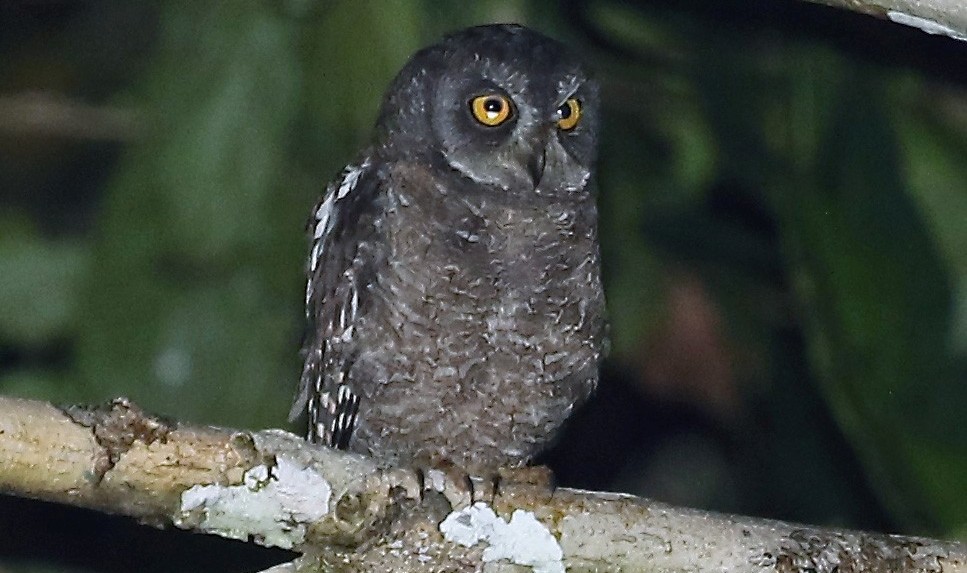IDENTIFICATION: A medium-sized Biak scops owl (c.25cm) with prominent ear tufts, lacking any trace of dark shaft streaks but with a few fine streaks on the forecrown. Barred overall (except on mantle) with light and dark; hindneck may have an indistinct collar of blackish and pale bars; occurs in rufous-brown and dark morphs. Eyes yellow.
Similar species Moluccan Scops Owl is distinctly streaked dark below and above. Mantanani Scops Owl has a more distinctly rimmed facial disc, have underparts marked with shaft streaks, and also differs vocally. Nicobar Scops Owl is much drabber, with a more barred crown and mantle, and well-banded tertials and tail.
IDENTIFICATION: Adult Typical morph has blackish barring overall, alternating with white. The rufous-brown morph is predominantly cinnamon-rufous with white barring below, cinnamon-brown above, and finely vermiculated. Facial disc pale brownish, indistinctly rimmed by a blackish edge and whitish spots. Ear tufts are moderately long and finely barred dusky.
Crown finely barred blackish, with few fine streaks on forecrown; nape barred blackish and white or pale buffish, forming indistinct collar. The upper parts are brown, rather densely barred, and mottled blackish and whitish. Outer webs of scapulars are mainly white, with a few black bars and black-fringed, forming a row of whitish spots across the shoulder. Flight and tail feathers barred dusky and pale.
Throat white, finely vermiculated blackish; rest of underparts paler brown, densely barred blackish and pale buff; practically without shaft streaks. Tarsi feathered almost to the base of toes, latter bare. Juvenile Unknown. Bare parts Eyes yellow. Bill is the dusky horn. Cere pale horn and toes dirty yellowish with Claws dusky horn.
Related Reading – Powerful Owl – A Strong and Shy Bird
Other Name: Biak Scops Owl is also called Beccari Scops Owl
VOCALISATIONS: The male’s song is a sequence of hoarse croaking notes, similar to that of Moluccan Scops Owl, but lower in pitch.
DISTRIBUTION: Biak Scops Owl is endemic to Biak Island off NW New Guinea.
HABITAT: Dense forest and wooded areas; locally near human settlements. Despite the similarity of its song to that of Moluccan Scops Owl, we consider beccarii a full species because of its strikingly different plumage and its allopatric and isolated distribution.
MEASUREMENTS: The size of the Biak Scops Owl is about 25cm in length.
Wing: 170–172mm, tail 79– 84mm.
Weight: no data.
GEOGRAPHICAL VARIATION: Monotypic.
HABITS: Strictly nocturnal.
FOOD: Biak Scops Owl diet mainly consist of insects and spiders, but probably also small vertebrates.
BREEDING: Biak Scops Owl build nests in holes in trees. The pure white eggs are laid directly on the floor of the nesting hole.
STATUS AND CONSERVATION: This species is only known from three specimens and a few sight records. Much of the forest on Biak has been destroyed or degraded, posing a serious threat to the long-term survival of this little-known species. Vulnerable.







